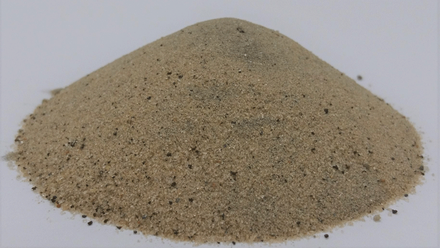Particle size impacts coal mining-related respiratory disease
Penn State University, USA, researchers reveal the mechanism by which nano-coal dusts have significantly more toxicity.

Compared to larger coal dust particles (micron-scale), the nano-coal dust shows an increase in carbon content and aromaticity, and a decrease in oxygen content, along with the reduction of oxygen-containing functional groups.
The reduction of oxygen content suggests a decrease in the ability of a water droplet to maintain contact with a solid surface, otherwise known as wettability. The increased pore volume and highly enhanced surface area in the coal nanoparticles, along with weaker wettability, suggest that nano-coal dusts have significantly more toxicity.
Prior research had shown that nano-sized particles are more toxic than their larger counterparts due to their unique physicochemical properties and easier uptake by living organisms, but the underlying mechanism of miners’ lung diseases due to nano-coal-dust exposure was not yet well understood, nor were the key factors resulting in pneumoconiosis (CWP) known.
'This project is the first of its kind to look at what is really contributing to the recent increasing trend of pneumoconiosis and silicosis in some regions in the United States, and the increasing trend of progressive lung fibrosis over the last decade,' says Shimin Lui, Associate Professor of Energy and Mineral Engineering at Penn State.
'We found that nanoparticles have the same toxicity as silica,' Liu says. 'Many think progressive fibrosis is from silica, but really the coal nanoparticles may also contribute to the toxicity. This is the first study of its kind to understand nano-particulate toxicity.'
He explains that reducing the permissible amount of exposure to respirable coal dust concentrations alone may not be effective, as evidence suggests that excessive dust concentrations may not be the only root cause of CWP. Instead, its toxicity, composition and size could be significant factors.
To close these knowledge gaps, Liu and his team has worked closely with partner mines to collect fresh coal dust at different working locations. They then characterised physical, compositional and petrophysical properties of the coal dusts using scanning electron microscopy/energy dispersive spectroscopy (SEM-EDS), X-ray photoelectron spectroscopy (XPS) and X-ray diffraction (XRD).
Finally, the samples were sent to Carnegie Mellon where the coal dust particles were exposed to a novel lung cell device to monitor the biological effects.
Through their work, the team reports to have established a reliable, reproducible protocol to fully characterise the potential toxicity of the coal dust, which includes parameters such as mineralogy, pore size distribution and the geochemical perspective.
Moving forward, Liu says they will hopefully develop a national data survey in the US for the nanoparticle contribution, which is still significantly unknown. Second, they want to lead research and instrumentation innovation.
'We know the different sizes matter, and the best practices from the mining industry are still valid, but we want to develop some wearable tools that can give the nanoparticle range of the dust exposure.'






